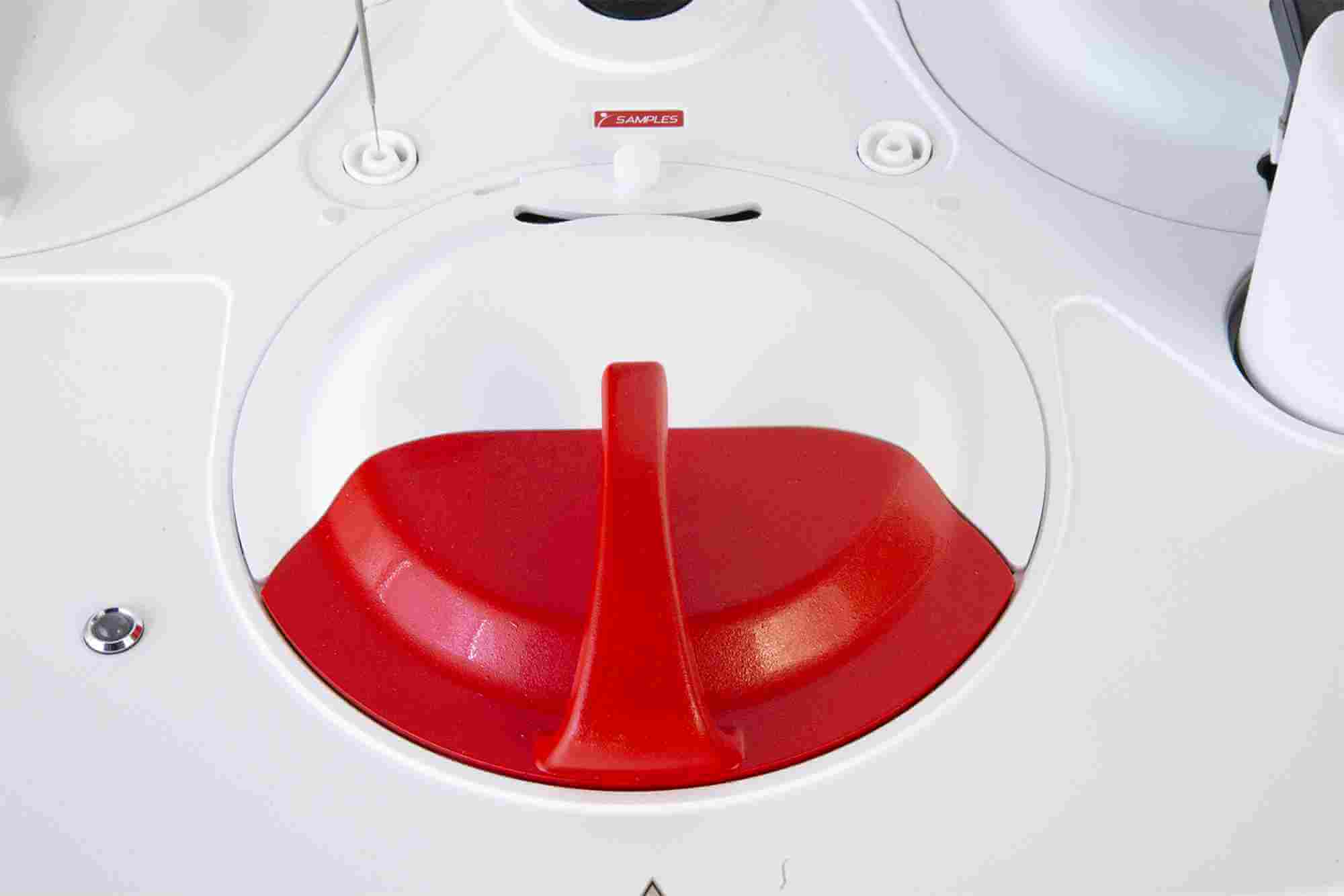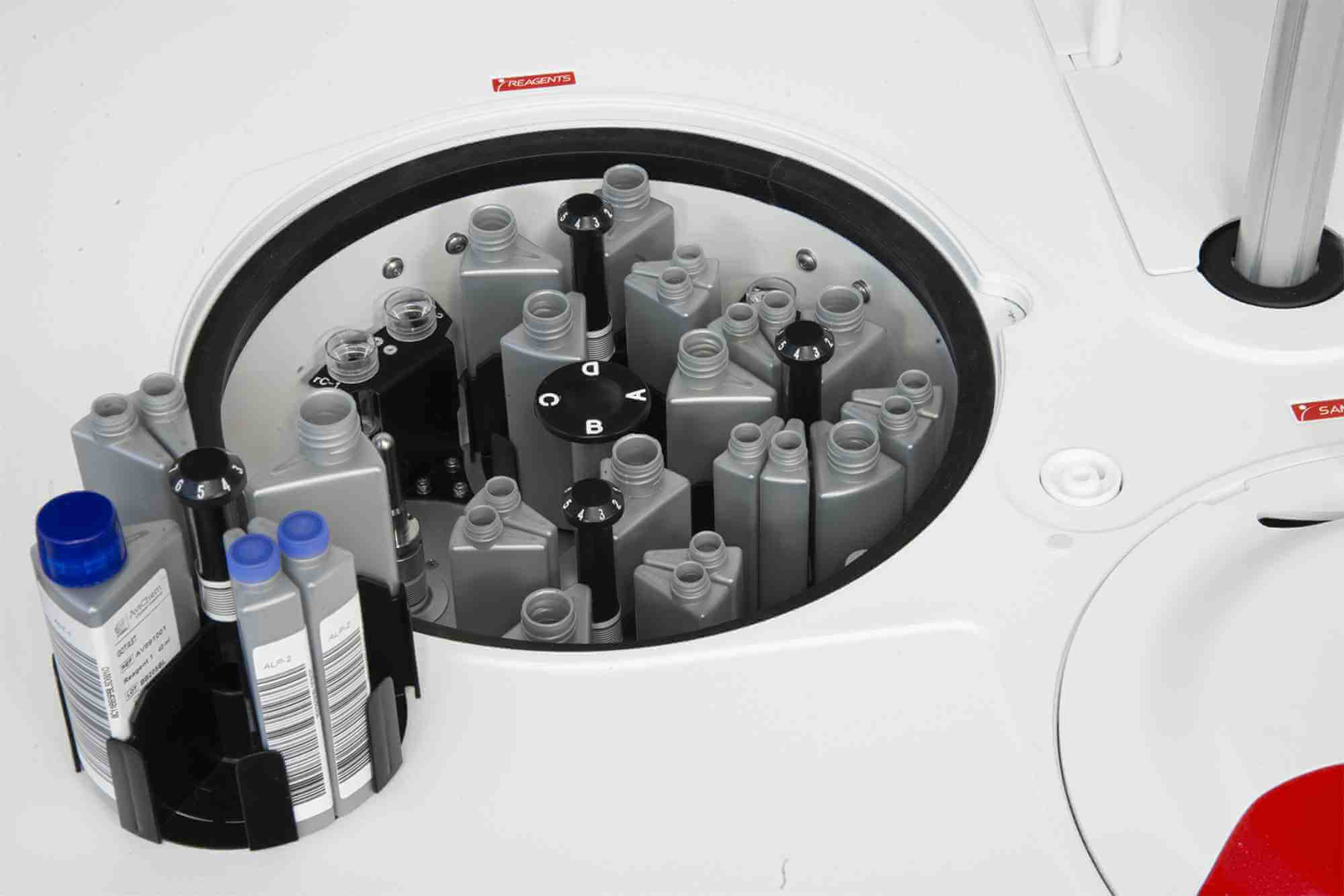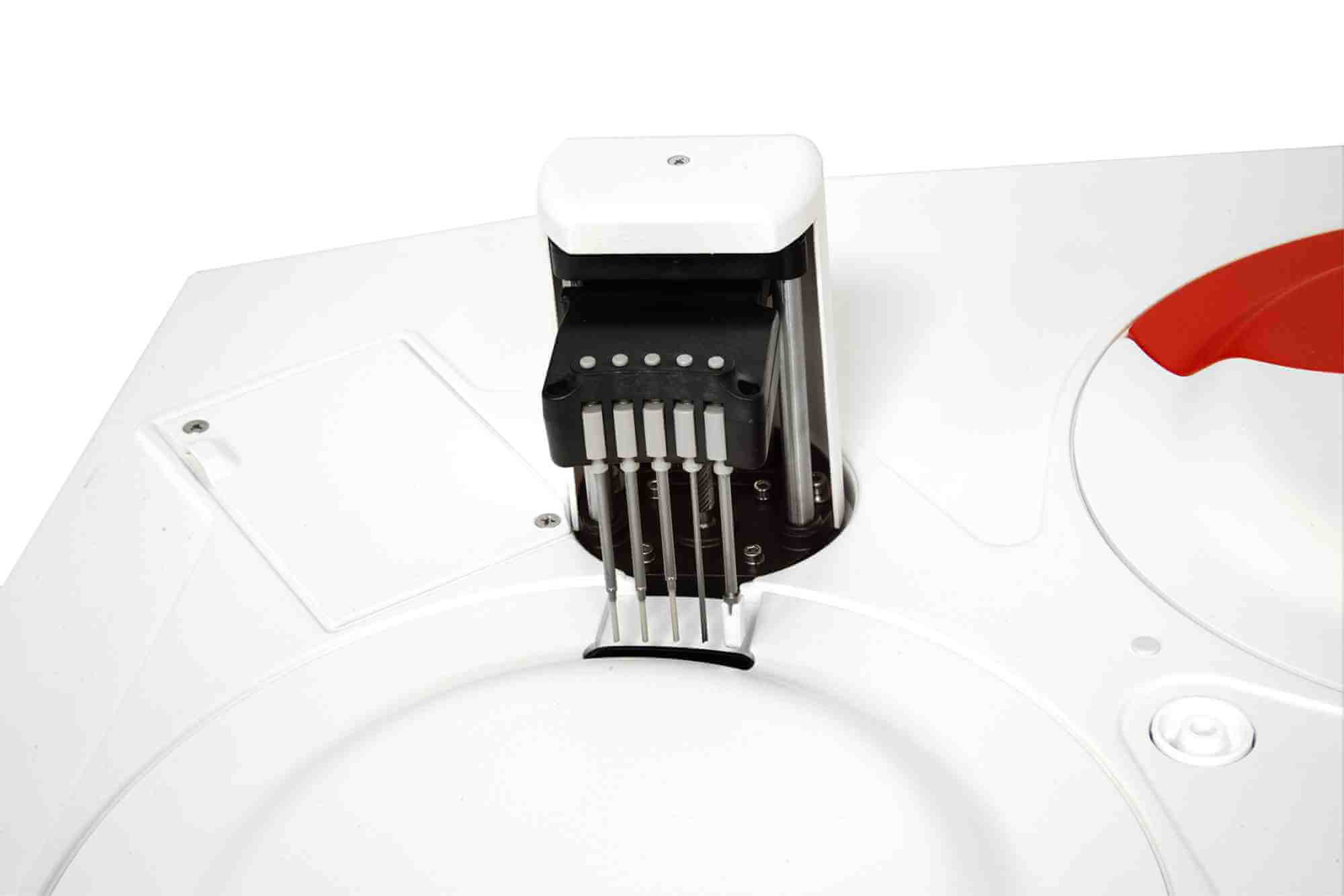SAT 450 Random Access Analyzer

Determine & Quantify Routine & Special Chemistries With Full Traceability & Reliability
The AMS Alliance SAT 450 is a fully automated, random-access clinical analyzer for routine and special chemistries testing, designed to support your laboratory in achieving improved operational efficiency, reducing reruns and manual handling.
The SAT 450 analyzes samples of serum, plasma, urine and other fluids, allowing clinicians to determine and quantify metabolites, electrolytes, proteins and drugs. These results give clinicians critical feedback on toxicology and health conditions, and they rely on the data for helping doctors make the best decisions possible for their patients.
SAT 450’s automation allows maximizing throughput, improves operator’s safety from exposure to biohazards. and minimizes cross-contamination risks.
SAT 450 is specially designed not only for routine biochemical analysis, but its performance and specifications make it an ideal analyzer for special chemistries in combination with larger platforms, those dedicated to routine testing.
Features
- Handles up to 450 tests per hour
- Up to 72 reagent positions in a refrigerated compartment
- 4 removable racks (up to 15 positions each) and 8 peripheral positions for 5 ml containers
- 80 long life, 6 mm optical path, semi-disposable cuvettes
- Controls can be loaded on reagent compartments and/or samples compartments
- Optional ISE module
Benefits
- Compact and simple operation
- Optimized sample and reagent mixing
- Double probe washing between each sampling cycle ensures clean, accurate results
- Continuous loading saves users time between testing cycles
- Cost effective with a long life in the field
- Reagent refrigerated chamber with built-in barcode reader – Reagent inventory management
- Practical design allows easy access for maintenance purposes by simply lifting up the entire light-weight analytical chassis
Applications
Ideal for Both Routine & Special Chemistries








Product Lineup
How it Works
Fully Automated for Maximized Throughput & Improved Operator Safety
The SAT 450 is highly automated and once the parameters are set in the software, the user can monitor testing without hands-on interaction. To operate a test, samples are loaded into the machine and the user programs the required testing. A probe measures a small portion of the sample and places it into a reaction vessel. Reagents are added from the on-board, refrigerated supply. Incubation time is allowed, if required; then ISE testing determines the concentration of analyte. Results are displayed on the software screen for the user.

System Components
Software
The SAT 450 software simplifies the analysis process and provides the user concise guidance through the operating functions. All parameters and settings are completely user programmable, and up to 999 methods can be stored. To conduct a test run, the user will select all of the testing parameters, including pre-dilution and re-dilution ratios, sample re-run options and reflex tests. When all of the parameters are set, the testing will automatically run, allowing the user to work on other tasks and return when the testing is complete.
During the testing cycle, the user can view the real time status of samples and reagents, and monitor for error messages, temperature control, and use the STOP, START, or PAUSE functions as needed. Once testing is complete, the test reaction curves, test calibration curves and Levy-Jennings and Youden QC statistics are available in the software.
The SAT 450 software simplifies the analysis process and provides the user concise guidance through the operating functions. All parameters and settings are completely user programmable, and up to 999 methods can be stored. To conduct a test run, the user will select all of the testing parameters, including pre-dilution and re-dilution ratios, sample re-run options and reflex tests. When all of the parameters are set, the testing will automatically run, allowing the user to work on other tasks and return when the testing is complete.
During the testing cycle, the user can view the real time status of samples and reagents, and monitor for error messages, temperature control, and use the STOP, START, or PAUSE functions as needed. Once testing is complete, the test reaction curves, test calibration curves and Levy-Jennings and Youden QC statistics are available in the software.
Additional Software Features:
- Multi-language files (user programmable)
- Bi-directional communication compliant with ASTM and CLSI standard
- Automatic transmission of patient data and results through serial port or Ethernet
- Reagents data traceability and management
- Westgard rules management
- Sampling order with priority management
- Possibility to compare current calibration with any previous calibration
- Preventive maintenance management
- Remote diagnostic capability
- Automatic startup and automatic shutdown procedures
Additional Software Features:
- Multi-language files (user programmable)
- Bi-directional communication compliant with ASTM and CLSI standard
- Automatic transmission of patient data and results through serial port or Ethernet
- Reagents data traceability and management
- Westgard rules management
- Sampling order with priority management
- Possibility to compare current calibration with any previous calibration
- Preventive maintenance management
- Remote diagnostic capability
- Automatic startup and automatic shutdown procedures




Specifications
Resources


















